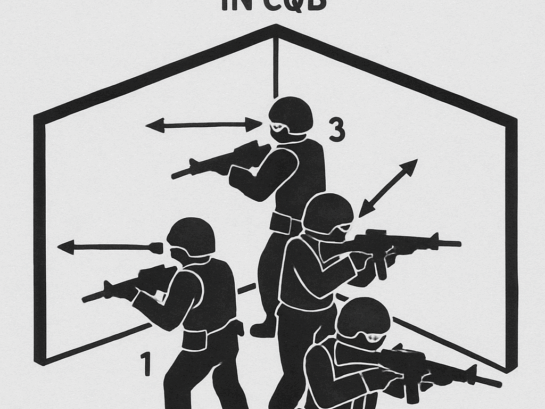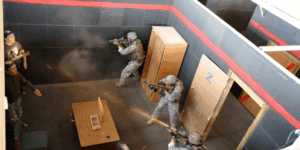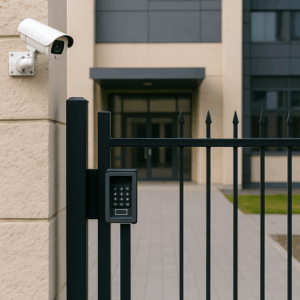CQB Training What are the 5 rules of CQB
Close Quarters Battle (CQB) is a tactical concept that encompasses a range of techniques and strategies used by military and law enforcement personnel during close-range combat situations. In environments where threats are imminent and space is limited, CQB training becomes indispensable. It provides individuals with the necessary skills to effectively navigate, engage, and neutralize threats in confined spaces. Mastery of these techniques can mean the difference between life and death in high-risk scenarios.
In this article, we'll delve into the five fundamental rules of CQB, which serve as the foundation for mastering close quarters tactics. These rules are crucial for anyone operating in environments where split-second decisions are required. Whether you're a seasoned professional or just starting in the field, understanding and applying these rules is critical for ensuring safety and mission success.
The first rule of CQB is maintaining situational awareness, a skill that cannot be overstated. Situational awareness involves being constantly vigilant and aware of your surroundings, which is crucial in high-stress environments. It encompasses everything from recognizing potential threats to identifying cover and using the environment to your advantage. Being aware of the smallest details can provide vital information that influences tactical decisions.
Situational awareness requires you to be alert and attentive at all times, as it helps you make quick, informed decisions in high-pressure situations. This awareness is not limited to the physical environment but extends to understanding the dynamics involving people around you, including teammates and potential adversaries. By developing a keen sense of situational awareness, you can anticipate and counter threats more effectively, often before they fully materialize.
Rule 2: Communication
Effective communication is the cornerstone of successful CQB operations. In the chaos of close quarters combat, the ability to convey clear and concise information can be the difference between success and failure. Communication ensures that all team members are on the same page, allowing them to coordinate their actions seamlessly. This synchronization is vital in fast-paced, high-stress environments where miscommunication can lead to disastrous outcomes, including friendly fire or mission failure.
Communication in CQB can take many forms, including verbal commands, hand signals, and radio transmissions. The key is to establish a common language and set of signals that everyone understands and can use under pressure. Regular training and drills help reinforce these communication skills, ensuring that team members can rely on each other when it matters most. Moreover, effective communication fosters trust and cohesion within the team, which are essential components of any successful operation.
Rule 3: Speed and Aggression
In CQB scenarios, speed and aggression often determine the outcome of an engagement. The ability to act decisively and swiftly once a threat is identified is crucial to gaining the upper hand. This doesn't imply recklessness but rather a calculated and controlled aggression that overwhelms the adversary, preventing them from effectively responding. The element of surprise can often tilt the scales in favor of the aggressor, making speed and aggression vital components of CQB.
Speed in CQB involves quick, fluid movements that minimize exposure to threats while maximizing the element of surprise. This includes moving swiftly through doorways, hallways, and other confined spaces. Aggression, on the other hand, is about maintaining momentum and pressure on the adversary, forcing them to react to your actions rather than dictating the pace of the engagement. Proper training ensures that these movements are executed with precision, reducing the risk of exposure and increasing the likelihood of mission success.
Rule 4: Cover and Concealment
by Daniel Silva (https://unsplash.com/@thesilvafocus)
Utilizing cover and concealment is another critical rule in CQB. These principles are vital for minimizing risk and increasing your chances of success in close quarters combat. Cover refers to physical barriers that provide protection from enemy fire, while concealment involves using objects or shadows to hide your presence. Both strategies are essential, but understanding their differences and applications is key to effective CQB tactics.
Understanding the difference between cover and concealment is vital, as not all objects provide both. For example, a solid wall offers cover from bullets, while a bush may only offer concealment. During CQB training, participants learn how to identify and use available cover and concealment to their advantage, moving strategically to maintain a position of strength. This training often includes exercises that simulate real-world scenarios, allowing individuals to practice and refine these skills in controlled environments.
Rule 5: Shoot, Move, Communicate
The final rule of CQB is the principle of "Shoot, Move, Communicate." This rule emphasizes the importance of maintaining a dynamic approach during engagements, continuously adapting to the situation as it unfolds. It involves a seamless integration of offensive and defensive actions to maintain the initiative and control of the engagement.
- Shoot: Engage threats accurately and efficiently, prioritizing targets based on the level of threat they pose. It's crucial to aim for precision and control rather than indiscriminate firing. This requires extensive training to develop the skills necessary for accurate target acquisition and engagement under pressure.
- Move: Never remain stationary for long. Movement makes you a harder target to hit and allows you to exploit opportunities as they arise. Use tactical movements to navigate around obstacles and maintain the initiative. This dynamic approach keeps adversaries off balance and prevents them from effectively organizing a counterattack.
- Communicate: Keep your team informed of your actions, intentions, and any changes in the situation. This ensures that everyone is working together towards a common goal and can adjust their actions as needed. Effective communication during movement and engagement maintains team cohesion and operational effectiveness.
The Importance of CQB Training
CQB training is essential for anyone operating in environments where close quarters combat is a possibility. It hones the skills needed to effectively apply the five rules discussed above, ensuring that individuals and teams can respond effectively to threats. Training prepares personnel for the unpredictable nature of CQB, building confidence and competence through repetition and realistic scenarios.
Training typically involves a combination of classroom instruction, live-fire exercises, and scenario-based drills. These elements help participants develop the muscle memory and mental acuity needed to perform under pressure. Regular training also keeps skills sharp and reinforces the importance of teamwork and communication. In addition to individual skills, CQB training focuses on developing unit cohesion, ensuring that teams can operate as a single, coordinated entity in high-pressure situations.
Close Quarters Battle is a complex and demanding discipline that requires a thorough understanding of its fundamental rules. By mastering situational awareness, communication, speed and aggression, cover and concealment, and the shoot, move, communicate principle, individuals and teams can improve their effectiveness in close quarters combat scenarios. These rules are not just theoretical concepts but practical skills that must be honed through rigorous training and real-world application.
Whether you're a military professional, law enforcement officer, or someone interested in self-defense, incorporating these CQB rules into your training regimen will enhance your ability to navigate and prevail in high-stakes environments. Remember, success in CQB is not just about individual prowess, but also about working cohesively as a team to achieve a common objective. Stay prepared, stay focused, and stay safe. A well-trained team that understands and applies these principles stands a far better chance of achieving mission success and returning home safely.







